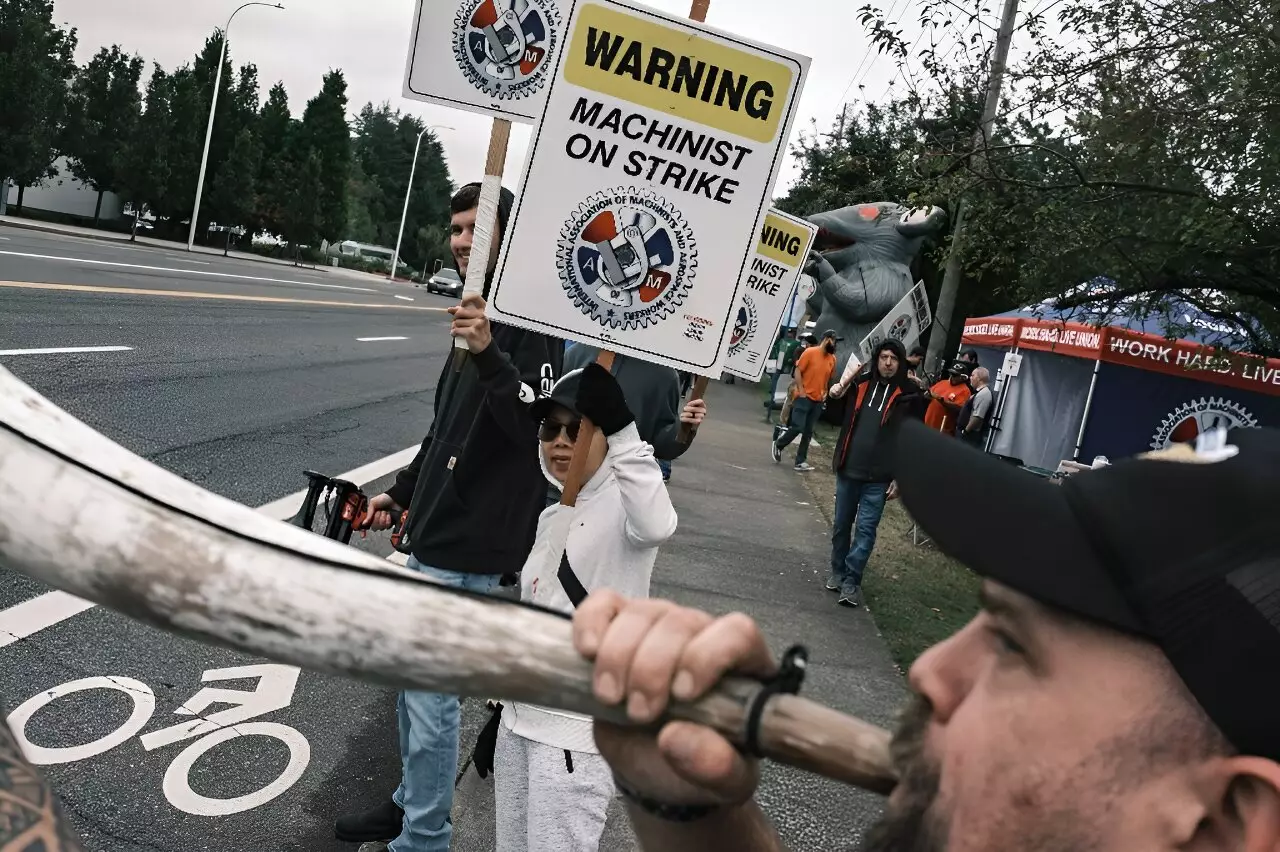The recent strike by approximately 33,000 workers at Boeing has cast a long shadow over the aviation industry, highlighting ongoing tensions between labor unions and corporate management. This significant action commenced on September 13, following a rejection of a contract proposal that was perceived as inadequate by the machinists and aerospace workers represented by the International Association of Machinists and Aerospace Workers (IAM). The implications of this strike are profound, affecting not only the individuals involved but the broader economic landscape.
The IAM confirmed on Friday that negotiations with Boeing had “broken off,” indicating a major setback in reaching a consensus. As both parties retreated from the bargaining table, the IAM expressed its willingness to continue discussions—either directly or with the aid of mediators—but with no future dates set for negotiations. Boeing, on the other hand, declared its intent to resume talks, signaling a commitment to restore its relationship with its workforce through good faith negotiations.
Despite this statement of intent from Boeing, the details of their latest proposal have raised eyebrows. The company’s offer, described as their “best and final,” included a substantial 30 percent wage increase and an annual bonus. However, this proposal was met with skepticism from the IAM, underscoring a disparity between what the company provides and what workers deem acceptable.
Central to the dissatisfaction among workers is the issue of pension plans. The IAM has made it clear that discussions on pensions have reached an impasse. Boeing’s refusal to unfreeze its defined benefit plan is particularly contentious. This pension policy is crucial for many employees, as it ensures long-term financial security. The IAM’s remarks indicate frustrations surrounding Boeing’s commitment to addressing not only the pension issue but also grievances related to pay, wage progression, and enhanced paid time off.
As Boeing’s workers have rallied for these fundamental changes, it raises questions about the company’s ability to retain skilled labor in an increasingly competitive market that heavily relies on experienced professionals.
The standoff between Boeing and the IAM has the potential to disrupt the production of key aircraft like the 737 MAX and 777, vital components of Boeing’s portfolio and the global aviation supply chain. With assembly plants effectively immobilized due to the strike, stakeholders across the industry are closely monitoring the situation. The ramifications extend beyond Boeing; suppliers and related businesses could face significant operational challenges as well.
Furthermore, the ongoing conflict places Boeing’s reputation under scrutiny, not just as an employer, but as a corporate entity capable of navigating labor relations in an era where workforce expectations are shifting towards more equitable treatment.
As the situation remains unresolved, one thing is clear: the stakes are high for both Boeing and its employees. Workers are fighting for recognition, improved compensation, and a secure future, while Boeing is poised to defend its operational integrity and financial stability. The outcome of this standoff will likely redefine labor relations within the aviation sector and set precedents for future negotiations. Both parties must find common ground if they wish to avert long-lasting economic damage that could ripple throughout the industry.


Leave a Reply